

Contents in This Month's Issue
• A Letter to Our Friends
• Current Exhibit: Worn to Dance—1920s Fashion & Beading
• Featured Exhibits in our Museum Shop: The Crochet Art of Cathy Adair-Clark
• Upcoming Exhibits: The Bird in Textiles
• Treasures from Permanent Collection: A WWII Nurse's Uniform
• Arts & Crafts Ephemera: How to Make a Clothes Pin Dress
• Historical Textile Trivia: The Legend of Point Tresse
• New Products & Publications
• Customer of the Month: Susan Zimmerman
• Textile Arts Events Calendar: What to Watch, See, & Do
Join our museum! | Sign up for our newsletter | Contact Us
![]()
Our warmest greetings, Lacis friends!
Welcome to our first springtime issue of our monthly newsletter! We sincerely hope this finds you well.
We're excited to announce that Worn to Dance: 1920s Fashion & Beading will be open for tours starting April 5th! Tours are $3.00 per person and can be scheduled on Monday or Saturday, for either a 1:00PM or 3:00PM timeslot. (In the future we plan on scheduling tours for more days of the week—stay tuned.)
However, all tours must be reserved in advance, are limited to five guests maximum, and, of course, masks must be worn by all parties. Don't forget, tours are free to Museum Members, and they can be accompanied by up to four guests—and all of them for free, too!
For our friends who wish to see visit us at the museum shop: we are still open for shopping by appointment, and we look forward to reopening completely when the City of Berkeley permits. Until then, please contact us ahead of your visit to make arrangements. Our goal is to accomodate everyone as safely as possible!
Since we last wrote to you, we've had several exciting new donations made to the museum collection.

A print photo of a joyful Milka and a reindeer, with some of the raku beads she fired; and just a few examples of the magnificent linen woven cloth that belonged to her family.
One was a very special, very local donation from a family with a long history in Berkeley. They made the astonishing gift of the Milka Rasi Amidon textile collection to us, consisting of yard after yard of stunning hand-woven linen fabrics, among other very fine textile pieces. Milka Amidon (née Rasi) was a consummate artist. She emigrated to the US from Finland in the '50s, and from sewing and knitting garments to firing ceramics, Milka lived her art. In time she became the artistic matriarch of an artistic family, and to them, she imparted her deep love of the arts and crafts. (See the work of her daughter, Tina Amidon, to see what we mean.)

A pair of silver- and amber-toned woven pieces from of the Amidon collection, featuring exquisite Arts & Crafts
floral motifs—the perfect embodiment of the historic Berkeley, California aesthetic.
It is our great privilege to share Milka's inspiring collection with you, and preserve it for future generations. We warmly thank the Amidon family for their generosity, and for mindfully keeping Berkeley's unique artistic heritage close to home.
In our next issue, we'll be spotlighting the splendid donation made by Carolyn Stratton Darby Gragg, including a vividly embroidered and eclectic collection of traditional reverse applique Mola panels that Carolyn, in her seafaring adventures, acquired from the peoples of the San Blas islands off the coast of Panama. If you stop by the museum shop, don't miss our special display of these panels—we've selected eight of our favorites featuring avian designs for your enjoyment and edification.
And for the sewists and costume aficionados among you, while you're visiting, please check out our new sale on vintage patterns. If you buy two, you'll get one (of equal or lesser value) free! The fashion illustrations on the paper envelopes are charming, and our selection represents a wide range of eras—styles from every decade!
Finally, we have a few new features in our newsletter we're excited to share with you. One is our Textile Arts Events Calendar, an exciting array of things for the textile arts enthusiast to watch, see, and do—and all from the comfort and safety of your own home. Another is Historical Textile Trivia, where we divulge tidbits of lesser-known aspects of lace and textiles that we think you'd like to know!
Again, we sincerely appreciate your continued support and engagement. Take care of yourselves, and keep creating—and until next time,
Kind regards, and many thanks—
Your friends at Lacis
Now open for tours by appointment!
• Masks are required
• Tours are $3.00 per person and must be reserved in advance—calling us at (510) 843-7290 is best
• Tours can be scheduled for Monday or Saturday at 1:00PM & 3:00PM
• Tours have a two-person minimum and are limited to 5 guests maximum
• For Museum Members and their guests (4 max), tours are free!
• Please note that the second floor gallery at this time is only accessible via stairs
Almost 100 years ago, with the dawn of the Jazz Age, life changed dramatically for women in America. Suddenly the 1920s woman could vote, drive, spend her own money, smoke and drink in public, cut off her long hair, expose her calves, forgo her corset and—perhaps most iconic of all—she could dance.
The most iconic pastime of the 1920s was dancing in nightclubs and speakeasies. Here women and men could freely socialize to the rhythm of Hot Jazz.
That rhythm is most clearly made visual in the image of the flapper, with her (relatively) short dress, which sparkled in the dim lights, given heft, form and movement by the innumerable beads sewed to its simple shift-shaped form.
These dresses, like the Jazz Age itself, were never destined to last. With the weight of the beads continually testing their union with the fragile silk, their eventual collapse was inevitable, as evidenced by the beads abandoned on the dance floor when the party was over.
This is why, though the dresses remained the quintessential symbol of the times, so few of them remain today. By attentive restoration, we have been able to present examples of these dresses as they appeared when they first shone, as well as fascinating examples of dresses in different stages of construction process.
Take a look at this cocoon-like opera coat, one of the shining stars of the exhibit:
"This incredible black Duchesse silk satin looks deceptively thin, but inside, it is interlined with two layels of wool flannel. The lining is luxurious peach-toned panne velvet, all designed to keep its owner warm on a chilly Seattle night. Outside the coat is decorated in high fashion Art Deco motifs. The gold glass bugle beads outline and highlight what were once silver blown glass beads of various shapes. Set crystal rhinestones serve as flower centers."
Opera coat donated by Karen Nelsen
"A magnificent white fox fur crowns the collar. Ties at the sleeves help reveal the lovely panne velvet lining and add special interest. Label reads: Helen Igoe, Seattle. Helen Igoe was considered 'Seattle's Hattie Carnegie.' She owned a high-end fashion shop on 5th Avenue in downtown Seattle from 1810-1950."
Igoe was a fascinating figure in 1920s fashion, an adventurous world-traveler who brought cutting-edge Parisian styles to the Pacific Northwest. For more historic Helen Igoe garments, we recommend starting with Washington's Museum of History & Industry, where they have a fabulous blue satin dress of her design in their collection.
From the collection of LMLT; conceived of and curated by the LMLT staff
Running from November 16, 2019—Extended end date TBD
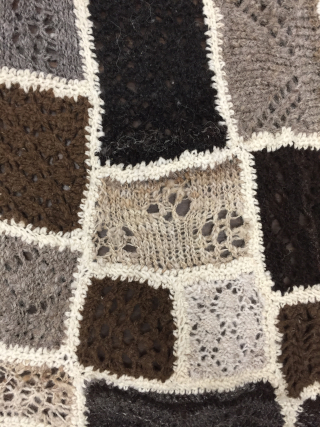
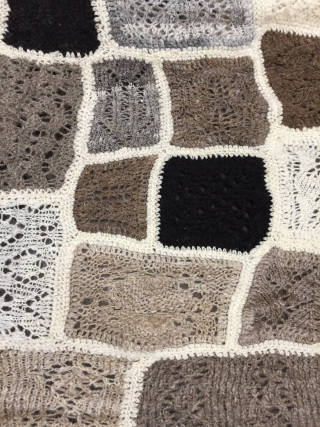
Shetland Lace Sampler
This generous donation of decorative textile artworks from Cathy Clark is a tour de force of talent and devotion to the world of needlework, specifically her world of knitting and Shetland yarns. "I fell in love with Shetland sheep and their fleeces," she confesses, "and that has ruled my life since 2007."
The magnificent sampler she constructed in 2012 is 8 feet by 6½ feet, comprising 67 different fleeces of yarn, all hand-spun by Cathy herself. We also have her personally compiled tome of sketches available for your perusal, with each motif and its pattern, along with sources and progress reports, all passionately and fastidiously documented.

Filet Crochet Panels
These monumental window coverings depict a fabulous range of animals, as well as a fascinating pastoral series, concentrating on a theme dear to Cathy's heart—sheep!
On your next visit to Lacis, don't miss Cathy's butterflies and birds, the colossal imposing owl, a lively provincial scene featuring rooster and hens, and the peacock posed in all his glory! In the wool industry-related sequence, we see a dog diligently guarding its flock, a shepherdess in the process of shearing, and presumably the same maiden seated, spinning wool.
We can't wait to share this gorgeous exhibit with you all soon!
For the time being, please enjoy this extract from the exhibit commentary.
The bird in literature and on canvas has long held its place through all civilizations and all times. The bird captured in thread and textiles is more obscure and less defined. Depicted by a single thread, a bountiful palette of threads, a thread following a hook or threads in harmony through the bobbins of lace, the bird is captured by the hands of the creator.
This amazing presentation captures this spirit from Pre-Columbian Peru to the earliest of laces to a world of unbound wealth of thread, color and needle.
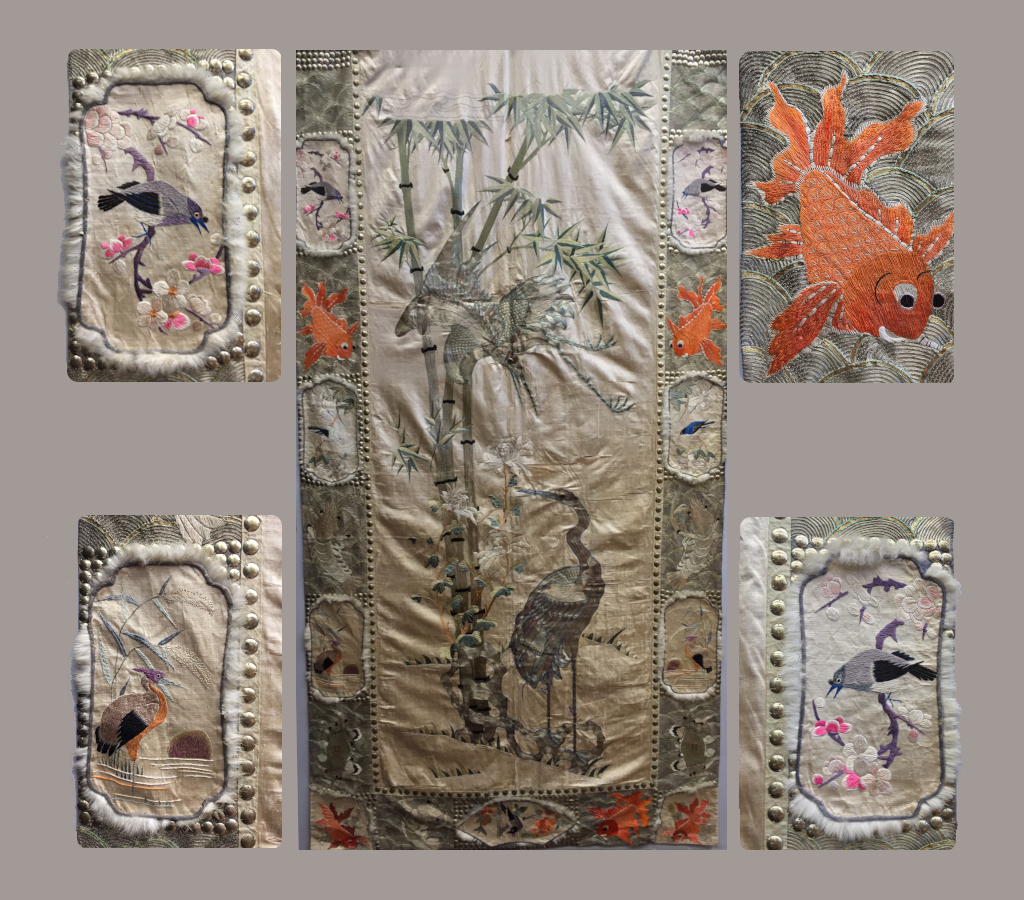
Bullion Embroidery, China [26029]
This substantial tapestry displays a great range of textural juxtaposition.
Weighty intermittent rivets gleam like oversized brass tacks, suggestive of brutal strength, a staccato beat, and structural solidity. Elsewhere, tufts of down demarcate squared-off borders, a wildly contrasting indication of liminal space—particularly in the way the diaphanous lines of their nearly invisible fibers blend together into a nebulous furry mass, with wispy tips delicately adrift, subject to drafts of air.
The piece is a tour de force in sensory interplay: the golden studs have a ringing coldness, and the feathers, an inviting softness. The assemblage must have presented a constant tactile temptation those constructing and encountering the piece.
Children, as much as creators and craftspeople, know very well that round, brassy buttons beg to be tapped with a fingernail, for example, or gently with another metallic object, to produce a clinking sound. Likewise, the soft fine tufts of fuzz naturally invite the petting of a hand. This vast disparity between cold and warmth, hard shine and gentle absorption, reflection versus matte diffusion, hints at a sense of humor and affection for life's hedonistic delights, and material variety.
The large herons dominate the main scene, but they are only the beginning. Beyond their little tableau, the wall-hanging encompasses further spaces within spaces, environments both naturalistic and strictly stylized. Observe the regularity of the border-path than becomes a menagerie surrounding the two herons, and the animals that occupy their own little enclosures.
The representation across species is immense. Several kinds of birds, silver prawns, crabs, chrysanthemum and bamboo also inhabit the zoological and botanical universe of the piece. Yet also note the flexibility of their rendering. The symmetry of the crab belies its origins in insignia and iconography; it is frozen in its Platonic perfection. The orange goldfish, on the other hand, are lively, animated, brimming with individual character and curiosity.
NOTE: To keep abreast of all new developments with regard to local museums, please refer to Alameda County's COVID-19 Arts and Culture Resources.

1940s WWII Vintage Red Cross Nurse Uniform, Tippet Cape and Nurse's Cap
Here at the Lacis Museum, we often remark to ourselves, "What stories this garment would tell, if it could speak...!" This is one of those pieces that may have witnessed an abundance of clamities—but perhaps also miracles. And in an age where we are reminded daily of the heroism and sacrifices of nurses and other front-line disaster workers, the image of this particular garment resonates with an especially stirring appeal.
The 35"-long cape was made by Marvin Neitzel in New York; its navy wool shell is a continuous piece, with its red wool inner lining seamed at the sides. A monogram reads "BET" (although the "T" could potentially serve as an "F"), and above it, there's a small, secure little coin pocket.
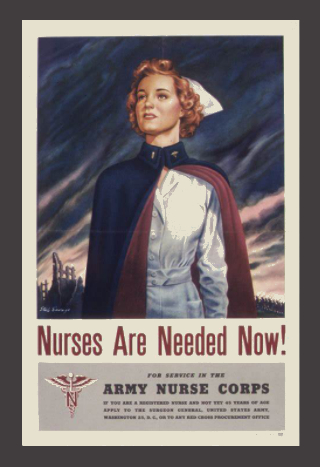
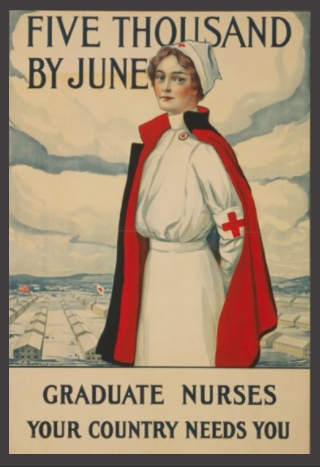
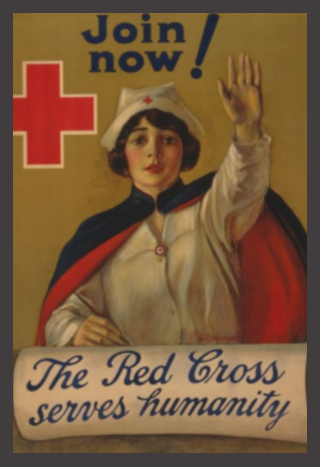
Want to dive in deeper? To put things into their historical context, author Sarah Sundin, whose novels are set during WWII, has written a helpful blog post about the evolution of these nurse's uniforms. And the Smithsonian Museum has an incredible collection of them, of course, which you can read about here.
This month, take a look at this poignant page of hand-written instructions reading: "How to make a clothespin dress—from Nona, when her mom died."
The best thing about this find is the fact that we have several such clothespin dresses in our possession, very old and very sun-faded. One is unfinished, and the other, we use every sunny Friday, when hanging our sturdier washed textiles out to dry on our clothesline. It is charming, in a very rustic, shabby-chic sort of way—an object both decorative, utilitarian, and, in this context, a sentimental heirloom.
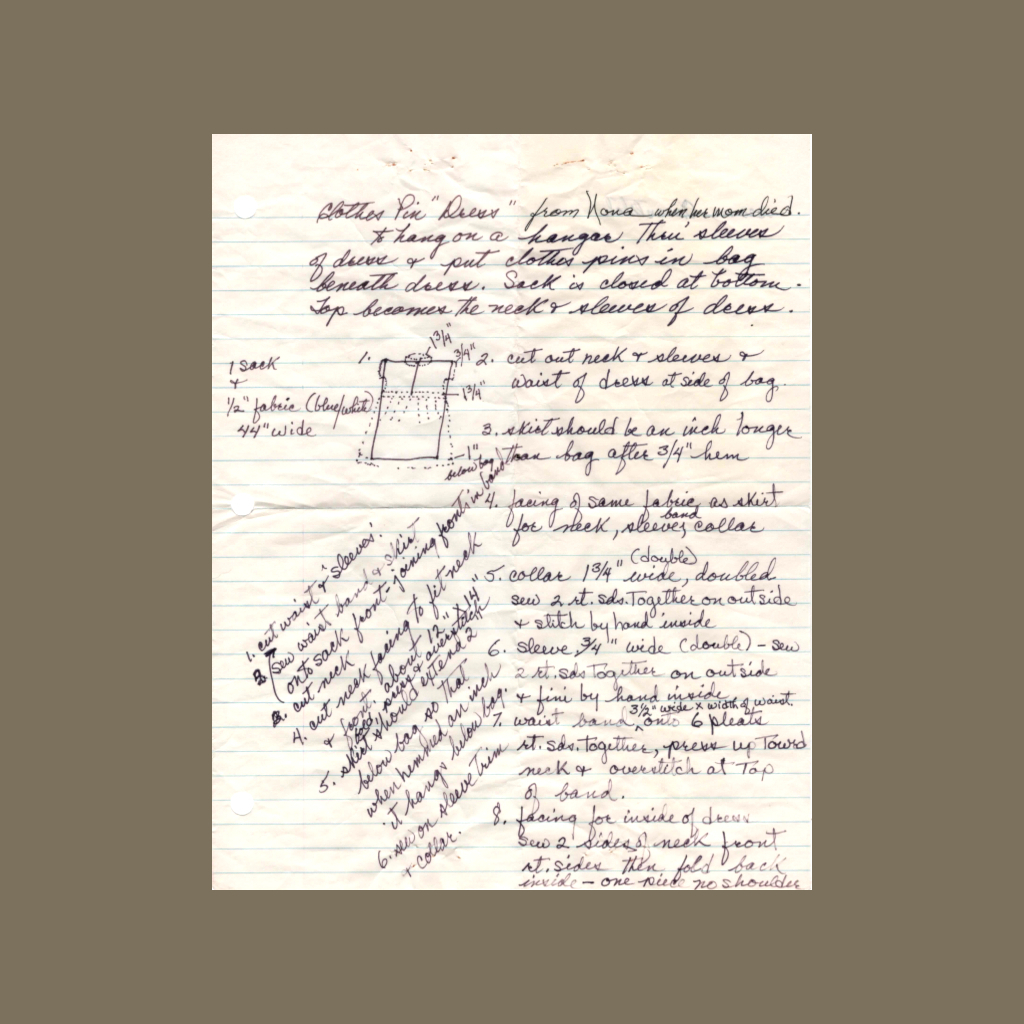
"Clothes Pin 'Dress' from Nona when her mom died,
to hang on a hanger thru' sleeves of dress & put clothes pins in bag beneath dress. Sack is closed at bottom. Top becomes the neck & sleeves of dress.
1. 1 sack & 1/2" fabric (blue/white) 44" wide [Diagram with measurements]
2. Cut out neck & sleeves & waist of dress at side of bag.
3. Skirt should be an inch longer than bag after 3/4" hem
4. Facing of same fabric as skirt for neck, sleeve band, collar..."
Did you know that a metallic-silver effect in antique lace was once achieved by incorporating white and silvered human hair? This excerpt is from Mrs. Bury Palliser's book History of Lace, on this so-called "Point Tresse":
"Point tresse, when made out of the hair of aged people, is occasionally to be met with on the Continent, where, from its rarity, it fetches a high price. Some districts gained a reputation for their work, according to Turner:—'And Bedford's matrons wove their snowy locks.' It may be detected by the glittering of the hair when held up to catch the sunbeams, and by fizzing when exposed to the test of fire, instead of blazing."
Now, the place of lace, among the upper echelons of society—especially the nobility and aristocracy—has long testified to their intimate dependency. The lace economy, after all, has long been driven by the demand from society's elites. But here's where things get interesting, not to mention deeply personal:
Mrs. Palliser also refers to a story wherein Mary Queen of Scots is gifted a small square of such silver hair lace by her mother-in-law. Mary's husband, Henry Stuart, was the son of the Countess of Lennox, whom Queen Elizabeth imprisoned in the Tower of London. While confined there, she fashioned and sent to Mary this precious token. What impossible depth of emotion this generous gesture implies! And what emotions Mary must have experienced upon its delivery—we can only begin to imagine.
While Mrs. Palliser's version is painfully difficult to parse due to her archaic and convoluted syntax (or deliciously complex, depending on how you like it), the Textile Research Center in the Netherlands has a more coherent retelling of the story you can read. Quite a curious and colorful little anecdote from the annals of lace and royalty, don't you think?
Don't forget, Lacis Museum Members receive 20% off of books purchased in our Museum shop!

8"-Reach Model: $20.00 (HL23) 11"-Reach Model: $28.00 (HL25)
Also known as professional "alligator" forceps, this precision-engineered device will effortlessly pick up everything left behind by the ubiquitous magnet...brass pins, threads, fabric, patterns, notes—and the occasional snacks that lie just beyond arm's length. Get into those hard-to-reach nooks and crannies in your sewing machine where the lint likes to hide! Available in 11" and 14" models.
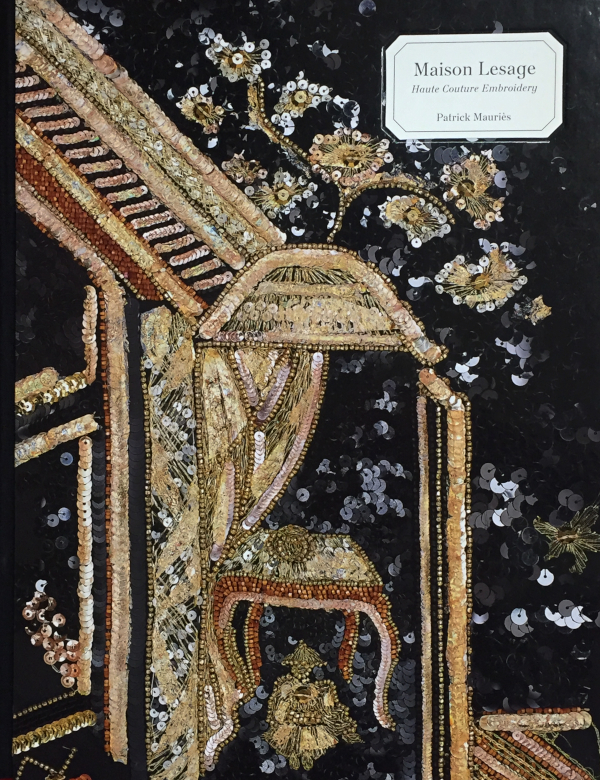
Thames & Hudson Ltd, $65.00 NQ31
Mauriès's book is a must-read for fans of art, fashion, and costume history, and a must-have for collectors of exceptional books. Lacis students of French tambour embroidery will be ecstatic to see just how beautiful and illuminating it is. He dives deep into the history of the Lesage family and the legendary designers who have left an indelible mark on Western culture—namely Chanel, Schiaparelli, Yves Saint Laurent, Balenciaga, Valentino, and Alexander McQueen. And the sumptuous photographs in this handsome hardback publication alone elevate it to a work of art itself: they transport the reader directly into a rarified atmosphere, immersive, fabulous, and unforgettable. (If you aren't already familiar with Maison Lesage, embroiderers extraordinaire to the haute couturiers of Paris—or even if you are—we recommend reading—or listening to—this 2011 NPR report for a fascinating glimpse into their refined world of elite embellishing.)
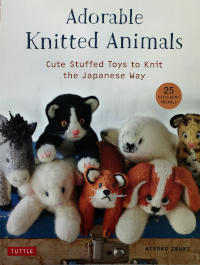
Tuttle Publishing, $22.00 FX53
Artist Hiroko Ibuki has designed 25 truly sweet little animal patterns! If you take a glance at her blog—it's in Japanese, of course—you'll find she's actually well-versed across a variety of textile crafts. (And her recent book on how to achieve the "bobble" effect in knitting looks really intriguing, too!) Her toy-making technique actually involves gently felting your knitted creature, for added fluffiness. Our favorite animals of her sweet menagerie include the rabbit (named Beatrix), William the baby penguin, and Neal the spotted seal (utterly charming). Imparting some advice reminiscent of the Mari Kondo's animist philosophy, Ibuki urges the reader and toy-creator, "Talk to the item you're making, and tell it, 'You're going to be so cute!'" Follow her on Instagram to see more pictures of the animals she's made for Cute Stuffed Toys!
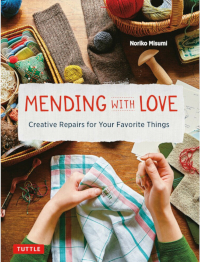
Tuttle Publishing, $22.00 FX52
This is a colorful and attractive hardback which will surely become many of our Lacis friends' favorite mending handbook. It covers the basics of sock-mending, covering up stains, holes, and frays, and even includes innovative ideas for upcycling tired old items, and stamping over stains. The black-and-white, boldly and clearly illustrated appendix of mending techniques is a fantastic reference of twenty-one different kinds of stitches and looping, crocheting, etc. You'll be able to flip exactly to the guidance you need, and fast. Now, if your interest is in conservation of the invisible mending style, this isn't really the book for you—however, if you're keenly interested in visible mending, as so many of us are, then this absolutely the book for you.
One of our favorite frequent visitors to Lacis has always been local fiber artist Susan Zimmerman. Textiles are in her blood: both her grandfathers were tailors, and art quilts were, for a long time, her medium of choice.
Nowadays, though, more experimentally, Susan enjoys the playful and methodical process of transfiguring the mundane objects of everyday life into more ghostly, suggestive expessions of their former themselves.
In her current Artist's Statement, Susan remarks on her practice of employing found objects: "The deconstruction and reconfiguration of existing materials has made me more aware of the magical process of transformation, and I find myself referencing this process by allowing ghosts of the original materials to be visible or by incorporating images or text"—which sometimes means manipulating meaningful historical paper ephemera, which you can see for yourselves under the "Lineage" section of her portfolio.
Over the last few years, Susan has been building up a visually arresting exploration of her family history, particularly with respect to their immigration to America. Her sculptural textile- and paper-based works have incorporated Ellis Island inspection cards, turn-of-the-century steamship tickets, and even an uncannily realistic set of luggage constructed from cardboard, gesso, and shellac.
A trio of haunting netted, mesh-like sculptures, representing a child's dress, a man's jacket, and an elderly woman's headscarf—presumably after they've endured a harrowing, protracted, and over-crowded sea voyage
So, as you can imagine, we were thrilled when Susan revealed to us her more recent developments in this vein. These three pieces—a child's dress, a man's jacket, and an elderly woman's headscarf—are ultimately intended to float aloft in mid-air, suspended from above by near-invisible monofilament string.
The netted forms incorporate a great deal of DMC's cotton "Turbino" thread (for which Lacis, we will proudly disclose, is her exclusive source), Aurafil cotton thread from Milan, and Solvay (a food-grade sodium bicarbonate, which can be used like starch, as a stiffener, which allows the skeletonized garments to maintain a somewhat rigid structure). Strategically staining the items in washes of tea adds to their "distressed" appearance.
Susan Zimmerman, we thank you for sharing your art and artistic processes with us. It's been such a fascinating and heartfelt journey, and we feel honored to have witnessed its growth and evolution.
Are you promoting an educational textile event,
and you'd like to see it posted in a future Lacis Newsletter?
Contact us, and let's see if we're a good fit!
Costume On 3
April 17-18, 2021
Here's an exciting educational opportunity: Costume On is an international online conference for historical costuming, founded during the 2020 quarantine. Convening for a third time, teachers from all over the US are once again video conferencing to teach fashion history and technique, covering eras from the 18th century to the early 20th. Classes include both lectures and hands-on workshops, with students from across the globe interacting with the teacher in real-time. Registration opens in March, so be sure to sign up for deadline announcements!
Hair Style
Dec 18, 2020—Aug 22, 2021

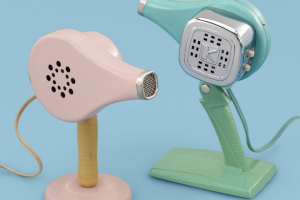
In the Harvey Milk Terminal 1 (Departures Level 2) at the SFO Museum is the Hair Style Fashion Exhibition. Don't miss the informative and beautifully produced Virtual Exhibition Tour! SFO Curator Nicole Mullen takes the viewer on an exciting journey through the (western) history of hair, and an array of "tools, products and novelty items" both beautiful and bizarre. This educational little video is a must-see for fans of the history of fashion, beauty, and costuming; and, if you should watch it and still find yourself hungering for more, you can delve even deeper into the world of "hair-aphernalia" by reading about the Beauty Bubble Salon and Museum, a delightfully quirky landmark in Joshua Tree from whence many of the items in the SFO exhibit were loaned.
Counting, Still Counting....
Current—March 28, 2021

At the Buster Levi Gallery in New York is renowned fiber artist Pat Hickman's installation, Counting, Still Counting...., which "consists of a narrow, linear strip of hash marks, 4 to 8 in. wide, made with rusty nails sandwiched between skin membrane (hog casings). The marks encircle the gallery space. Counting surrounds us. It's universal, this visual mark making—ecording, numbering, adding, tallying, measuring—a record of time. Archeological evidence suggests ancient cultures have kept track too. We're part of a human continuum, but perhaps now, for us personally, we're counting more than ever before."
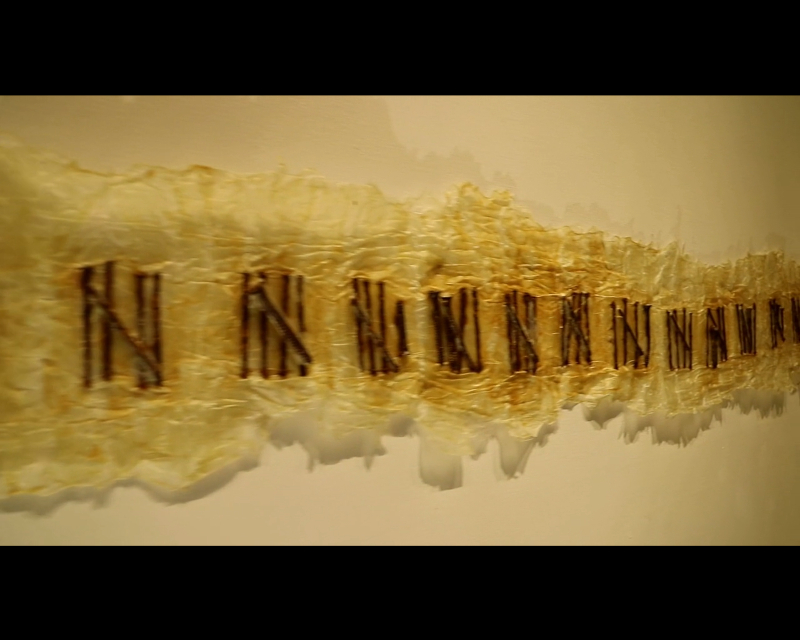
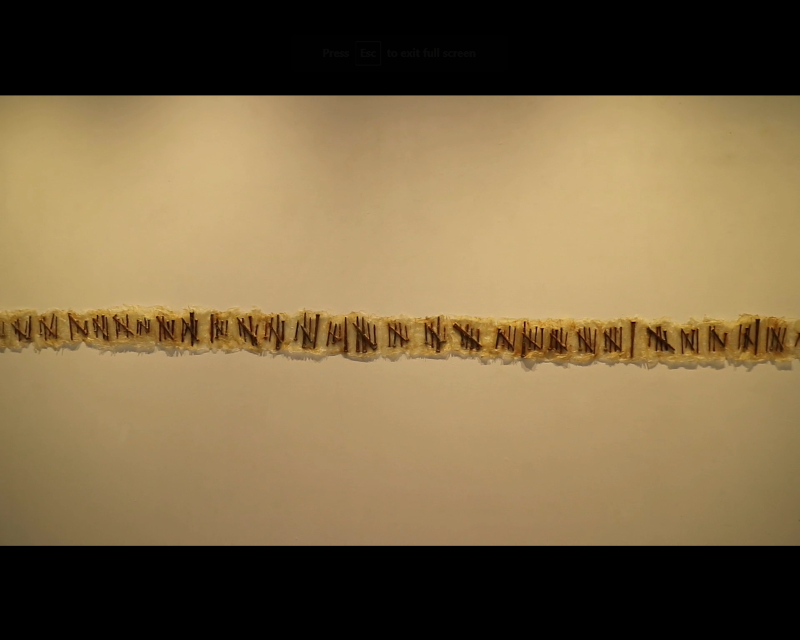
Heavily corroded railroad ties and industrial-sized screws create a jagged, almost post-apocalyptic line
of tally marks under the translucence of organic membrane material, speaking hauntingly of our protracted time in confinement.
Visit this extraordinary—and timely—installation from the comfort of your own home, and watch the Virtual Installation Tour!
Pat Hickman is an important figure in the textile arts, and has some deep roots in Berkeley. She obtained her M.A. in Design and Textiles from UC Berkeley in the '70s, and taught there as well as at Pacific Basin School of Textile Arts. She's done residencies across all corners of the globe, and her work is housed in the permanent collections in numerous fine arts and cultural museums.
You can read an interesting account about the workshop she led at Lacis in 2017 in the Bay Area Basket Maker's Newsletter, written by textile artist Barbara Shapiro and archived on Pat's website. The workshop was called "Openings: Knotted Netting", the exploration of netting being a crucial part of Pat's oeuvre. She first came across knotted netting while living in Turkey where she watched
the fishermen repairing their nets, and that specific area of textile arts relates strongly to one of Pat's most powerful and interesting works: the monumental entrance gates she designed for
the Maui Arts and Cultural Center, called Nets of Makali'i, fabricated in 1994.
National Arts Club Events
All these lectures are currently available to watch on YouTube!
The mission of The National Arts Club (The National Arts Club) is to stimulate, foster and promote public interest in the arts and educate the American people in the fine arts. The NAC hosts both members-only and public events, including exhibitions, theatrical and musical performances, lectures and readings. All on-site programming has been postponed until further notice, however the NAC has been presenting, free to everyone, virtual events via Zoom. Afterwards, the lectures are available to watch on YouTube for free if you subscribe to the NAC channel. These lectures are all currently available!
• Historian Explores Criminal Fashion
Dr. Matthews David, author of Fashion Victims: The Dangers of Dress Past and Present, provides a glimpse into how 19th and early 20th century citizens, criminals, and police used dress to commit and detect crime.
• Pajama Party: A History of Leisurewear
Menswear historian Andrew Yamato explores the history of leisurewear—from smoking caps to silk dressing gowns to velvet slippers.
• Discovering the Rose in Fashion
A conversation with Amy de la Haye, whose book The Rose in Fashion: Ravishing explores how the rose has inspired the way we look, dress, feel, and fantasize.
• Hamilton Costume Designer Discusses Award-winning Career
Tony Award-winning costume designer Paul Tazewell discusses his work on Broadway, including the hit musical "Hamilton," as well as his work in regional theater, film, television, dance, and opera.
The Lacis Museum of Lace and Textiles is a 501(c)(3) non-profit corporation. We are a unique legacy museum located in Berkeley, California. We host a wide range of hands-on workshops, several galleries of rotating exhibits, and our museum shop carries an extensive supply of vintage goods, craft- and costume-related books, and needlework supplies.
Our purpose is to:
• Preserve lace and textiles of all cultures from all periods
• Provide a resource center for research and documentation of these objects
• Educate and disseminate knowledge of lace and textiles
For an annual fee of $25.00, you can become an official, card-carrying Lacis Museum Member and enjoy exclusive benefits! You can get your membership via our Etsy shop, or alternatively, contact us in a number of other ways to join this vitally important circle of Lacis friends. We thank you for your support!
• 10% discount at our Etsy shop for purchases over $50
• 20% off books purchased at the Lacis Museum shop
• Free museum admission for you and up to (4) guests
• Special invitation to show openings
• Class discounts
A Message from Our Director
This special time of the year cannot be ignored. We acknowledge the equinox with the perfect balance between night and day, we witness the flora with buds bursting from their unnoticed dormant state and we celebrate our own rituals of Passover and Easter, each portending a better time ahead.
In our own special world, our Museum is likewise awakening, sensing the end of a dark winter and regaining its purpose as a place of learning and sharing of our textile experiences.
We look to the doors again opening, classes being scheduled and the many visitors who find a home here.
We look forward to ingesting the air without the filtration or restrictions of our masks.
We look forward to recognizing the smiles hidden for so long.
—Jules Kliot, Director

The Lacis Museum of Lace & Textiles
2982 Adeline St.
Berkeley, CA 94703